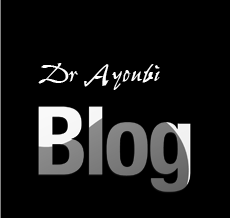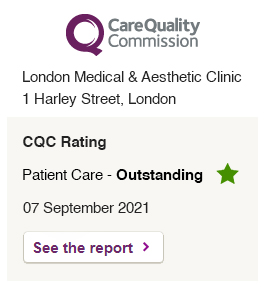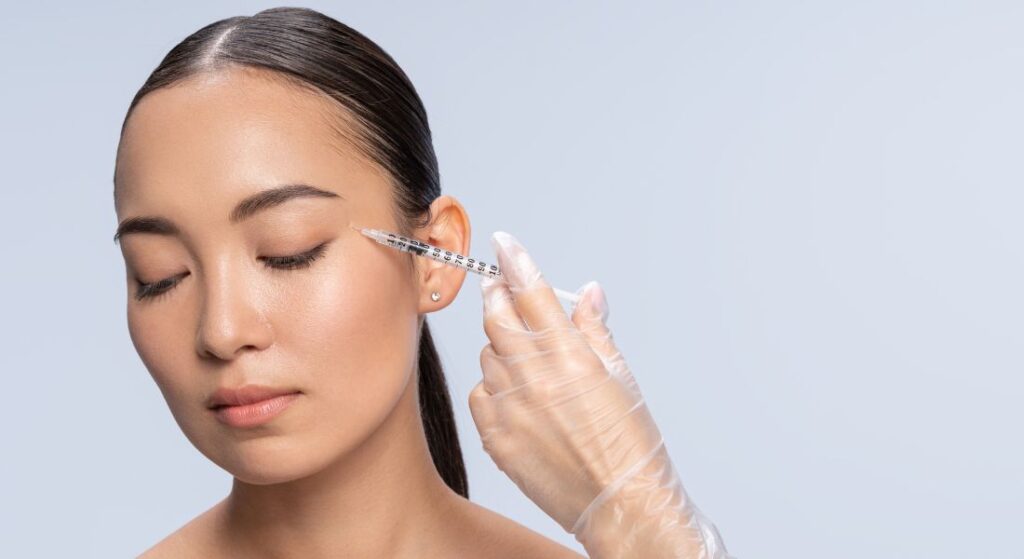
If you’ve been exploring the world of advanced skin rejuvenation, you’ve probably come across Juläine one of the latest collagen-stimulating injectables designed to improve firmness, elasticity, and hydration from within.
Unlike traditional fillers that simply add volume, Juläine works by activating your skin’s natural regenerative processes, helping it rebuild collagen and elastin over time. The result is smoother, more resilient skin with a healthy, youthful glow.
But, like any injectable treatment, you may wonder: “Are there any side effects?”
The short answer is that Juläine is considered safe when performed by trained professionals. Still, as with all medical aesthetic procedures, there are temporary effects and aftercare steps you should be aware of.
In this article, I’ll explain what happens after treatment, what side effects are normal, when to seek advice, and how to ensure the best possible outcome.
Understanding How Juläine Works
Before diving into side effects, it helps to understand what Juläine actually does beneath the skin.
Juläine is an advanced biostimulatory collagen treatment, meaning it uses carefully formulated active ingredients to stimulate your body’s own production of collagen and elastin the two key proteins responsible for keeping skin firm and smooth.
Over time, these proteins naturally decline, leading to:
– Sagging or loss of firmness
– Fine lines and wrinkles
– Dullness or dehydration
– Reduced elasticity
Juläine contains a combination of biocompatible substances designed to encourage fibroblast activity the cells that generate new collagen fibres. When injected into precise areas, it gradually improves the structure and texture of the skin from within.
You won’t see an instant volumising effect as you would with a filler. Instead, results appear progressively over several weeks as your skin regenerates naturally.
Is Juläine Safe?
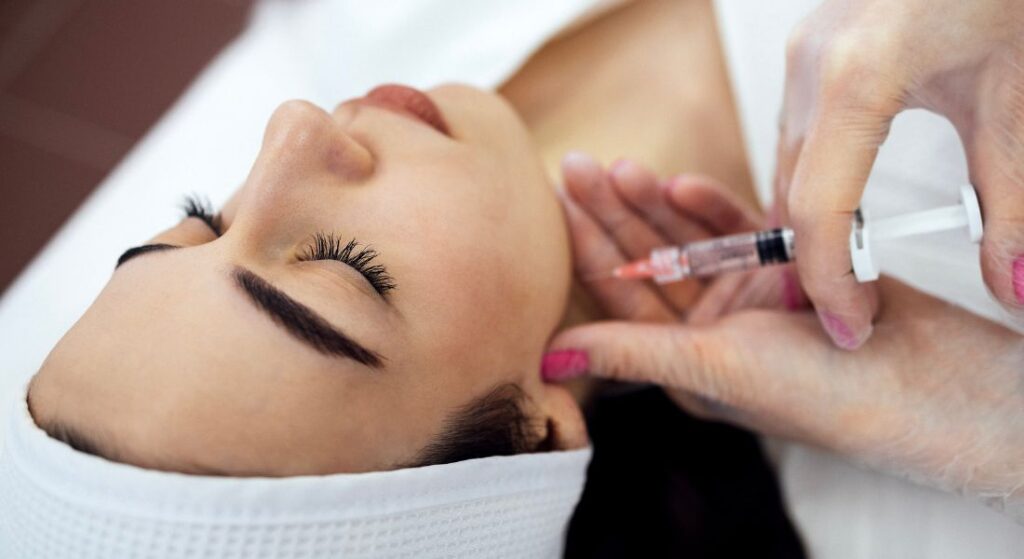
Yes Juläine is considered very safe when administered by a qualified medical practitioner using the correct technique.
Its formulation is biocompatible and biodegradable, meaning it integrates smoothly into the skin and is eventually broken down by your body.
Clinical studies and early adopters in the aesthetics field have reported high satisfaction rates with minimal downtime and few side effects.
However, as with any injectable, the treatment involves puncturing the skin which means mild, short-lived reactions are possible.
Common and Expected Side Effects
Most side effects associated with Juläine are mild, temporary, and part of your body’s natural healing process.
Here’s what you may experience and why it happens.
1. Redness at Injection Sites
Mild redness is extremely common and occurs due to minor inflammation caused by the needle entering the skin.
It usually appears immediately after treatment and fades within a few hours to 24 hours. You can safely return to work or social activities shortly after your session.
How to manage:
– Avoid touching or rubbing the area.
– Use a cool compress to reduce warmth.
– Skip makeup for 12–24 hours if possible.
2. Mild Swelling
A small amount of swelling is normal as the skin reacts to both the injection and the active ingredients.
This may make the treated area appear slightly puffy or tender for a day or two.
How to manage:
– Keep your head elevated while resting.
– Avoid alcohol, salty foods, and strenuous activity for 24 hours.
– Use a cold compress intermittently.
3. Bruising
Even with expert technique, tiny blood vessels beneath the skin can sometimes break, resulting in small bruises.
These are harmless and typically fade within 5–7 days.
How to manage:
– Apply arnica gel to help bruises heal faster.
– Avoid aspirin or anti-inflammatory medications before treatment unless prescribed.
– Use gentle concealer after 24 hours if needed.
4. Tenderness or Mild Soreness
Because Juläine is injected into the mid-to-deep layers of the skin, mild tenderness is expected.
You may feel slight discomfort when touching the area, similar to post-exercise soreness. This sensation usually resolves within a couple of days.
How to manage:
– Avoid facial massages or pressure on the area for at least 72 hours.
– Use paracetamol if needed (avoid ibuprofen as it can worsen bruising).
5. Small Lumps or Bumps (Injection Nodules)
Immediately after treatment, you may feel small raised bumps under the skin. These are simply the product deposits before they integrate fully.
They usually smooth out on their own within a few days as the product disperses naturally.
How to manage:
– Do not press, squeeze, or massage unless instructed by your practitioner.
– Keep the area clean and avoid applying excessive creams or oils.
6. Mild Itching or Warmth
A mild warm or tingling sensation can occur as part of the skin’s inflammatory healing response.
This is usually temporary and may indicate that collagen stimulation is beginning to take place.
How to manage:
– Avoid scratching or using fragranced products.
– Use a gentle, soothing moisturiser if needed.
Less Common Side Effects
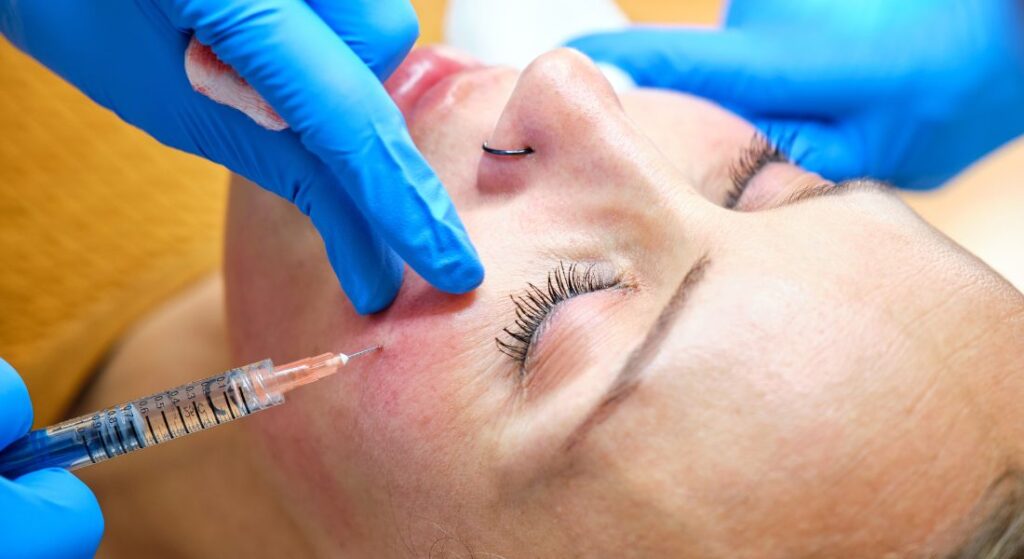
While rare, there are a few less frequent side effects you should be aware of.
These are typically related to individual skin sensitivities or improper aftercare.
1. Prolonged Swelling or Firmness
Occasionally, swelling may last more than 72 hours. This can happen if your body takes longer to process the injectable or if the treated area experiences minor irritation.
If swelling persists beyond a few days, consult your practitioner for assessment.
2. Localised Inflammation or Redness
If redness or heat persists for more than three days, it could indicate irritation or a mild infection.
Keep the area clean, avoid makeup, and contact your clinician if symptoms worsen.
3. Allergic Reaction (Extremely Rare)
Because Juläine is made from biocompatible materials, allergic reactions are highly uncommon. However, if you have a history of allergies or sensitivities, discuss this during your consultation.
Watch for signs such as:
– Persistent swelling
– Severe itching
– Rash or hives
If these occur, seek medical attention immediately.
4. Temporary Unevenness
In some cases, one area may appear slightly more lifted or plumper than another during the early healing phase.
This balances out as collagen stimulation evens the skin’s texture and tone over several weeks.
What You Should Expect After Treatment
Juläine has a relatively short recovery period compared to other collagen-stimulating injectables, so most people can get back to their normal activities almost immediately.
In the first 24 hours, you might notice some redness, swelling, or mild tenderness at the injection sites. During this time, it’s best to avoid makeup, strenuous exercise, and alcohol to allow your skin to settle. By day two or three, slight bruising or small bumps may appear. Continuing gentle skincare and staying well-hydrated can help your skin recover smoothly.
Around day four to seven, you should start to feel your skin becoming smoother as initial inflammation fades. If you want, you can resume wearing light makeup during this period. By the second to fourth week, the collagen-stimulating effects of Juläine start to kick in more noticeably, so make sure to protect your skin with SPF and keep using a barrier-repair moisturiser to support healthy skin function.
Between the second and third month, most people see visible results: firmer, more radiant, and refreshed-looking skin. Maintaining a healthy diet, staying hydrated, and following your post-treatment skincare routine will help you get the most out of your treatment.
Tips to Minimise Side Effects and Support Healing
1. Choose a Qualified Practitioner
Always get your Juläine treatment from a licensed medical professional. Proper technique reduces the risk of bruising, swelling, or uneven results.
2. Avoid Blood-Thinning Substances
For at least 48 hours before your appointment, try to avoid alcohol, fish oil, or anti-inflammatory medication (unless prescribed).
3. Don’t Touch or Massage the Area
Let the product settle naturally. Massaging prematurely may cause lumps or migration.
4. Keep Skin Clean and Calm
Skip exfoliation, saunas, and steam rooms for 48 hours. Use mild, fragrance-free cleansers and moisturisers.
5. Protect from Sun Exposure
UV light can trigger inflammation and pigment changes after injectables. Use broad-spectrum SPF 30+ daily.
6. Stay Hydrated
Collagen synthesis requires adequate water intake. Aim for 6–8 glasses of water per day.
7. Eat Collagen-Boosting Foods
Add vitamin C-rich fruits, leafy greens, and omega-3 fatty acids to support healing and skin regeneration.
How Long Do Side Effects Last?
Most side effects from Juläine resolve within 2–5 days.
Bruising may take up to a week to fade completely, depending on your skin type and circulation.
If small nodules persist beyond 10–14 days, your practitioner may recommend a light massage or check-up to ensure full integration.
When to Contact Your Practitioner
While serious complications are rare, it’s important to monitor your skin carefully in the first few days after treatment.
Call your clinic immediately if you experience:
– Severe or increasing pain
– Spreading redness or swelling
– Signs of infection (heat, discharge, fever)
– Hard lumps that do not soften over time
Your clinician can assess whether additional treatment or medication is needed.
Comparing Juläine to Other Collagen Treatments
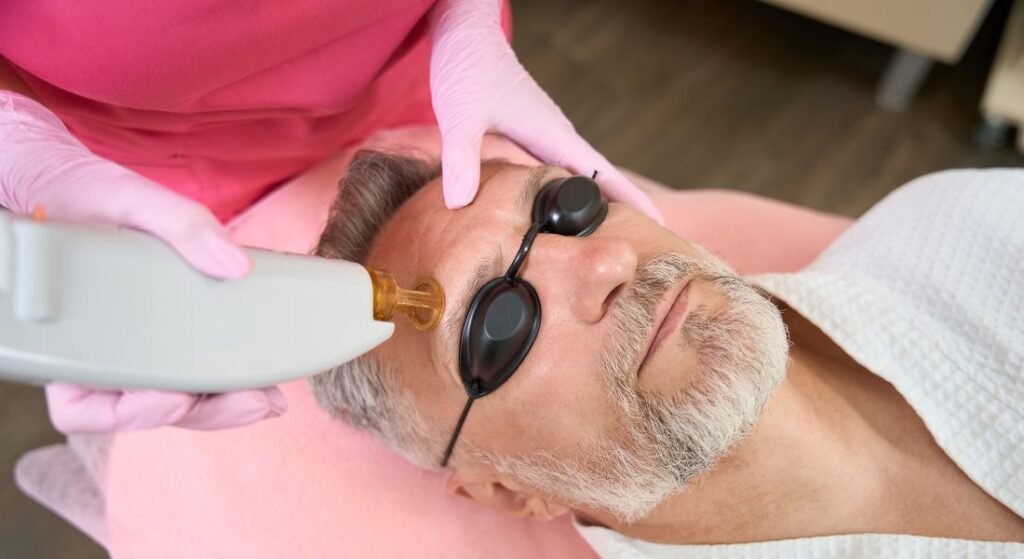
You might hear Juläine compared to other collagen-stimulating treatments like Sculptra or Radiesse. While all of these aim to boost your skin’s collagen, Juläine is generally gentler and integrates more naturally into the skin, which often means fewer side effects and a smoother overall result.
Juläine works through collagen biostimulation, helping your skin rebuild its own structure over time. In comparison, Sculptra uses poly-L-lactic acid, while Radiesse relies on calcium hydroxyapatite to achieve similar effects. One of the benefits of Juläine is the minimal downtime most people experience only one to two days of mild redness or swelling, whereas Sculptra or Radiesse can require a few more days to settle, sometimes accompanied by lumps, firmness, or bruising.
When it comes to seeing results, Juläine typically starts to show improvements in two to three months, similar to Radiesse, though Sculptra can take slightly longer. The effects of Juläine can last up to 18 months, offering long-lasting rejuvenation while maintaining a natural look. Its smooth texture and even dispersion make it a great option if you’re looking for subtle but noticeable improvement without the extended recovery time that some other treatments may require.
Who Should Avoid Juläine Treatment?
Juläine may not be suitable for everyone. Avoid treatment if you:
– Are pregnant or breastfeeding
– Have active skin infections or cold sores in the area
– Are allergic to any component of the formula
– Have autoimmune disorders affecting healing
– Are on blood-thinning medication (consult your doctor first)
A professional consultation will help determine whether Juläine is appropriate for your skin type and medical history.
How to Ensure the Best Results
Achieving glowing, rejuvenated skin isn’t just about the treatment it’s also about how you care for your skin afterwards.
1. Follow Aftercare Instructions Diligently
Your practitioner will provide personalised post-treatment guidance. Following it carefully prevents complications and optimises your outcome.
2. Maintain a Consistent Skincare Routine
Use gentle cleansers, hydrating serums, and sunscreen daily. Avoid harsh exfoliants or retinoids for at least one week post-treatment.
3. Book Follow-Up Appointments
Depending on your treatment plan, you may need multiple sessions to achieve full results. Follow-up visits allow your practitioner to monitor progress and fine-tune results.
4. Prioritise Skin Health Long-Term
Support your collagen levels naturally by staying hydrated, eating antioxidant-rich foods, and avoiding smoking or excessive sun exposure.
Frequently Asked Questions About Juläine Collagen Treatment:
1. How long does it take to see results after Juläine treatment?
You can expect to notice gradual improvements in your skin’s firmness and texture over the course of two to three months. Unlike traditional fillers, Juläine works by stimulating your body’s own collagen production, so the results build progressively and continue to improve over time. Most patients see the full effect within three months, with results lasting up to 18 months depending on your skin type and lifestyle.
2. Will Juläine make my skin look immediately plump?
Juläine is different from volumising fillers, so you won’t see instant puffiness or dramatic plumping. The treatment focuses on enhancing your skin’s natural structure and resilience, which gradually smooths fine lines, improves elasticity, and gives your skin a healthy, refreshed glow. Immediate changes are usually subtle, with more noticeable results appearing over several weeks as collagen production ramps up.
3. What are the most common side effects of Juläine?
After treatment, you might experience mild redness, swelling, or tenderness at the injection sites. Small bruises or temporary nodules under the skin are also possible, and they generally resolve within a few days. Some people notice a slight warm or tingling sensation as part of the natural healing response. These effects are temporary and indicate that your skin is responding to the collagen-stimulating treatment.
4. Is Juläine suitable for all skin types?
Juläine is generally safe for most skin types, but it may not be suitable if you have active skin infections, autoimmune conditions affecting healing, or known allergies to any component of the formula. It’s also not recommended during pregnancy or breastfeeding. A professional consultation can help determine whether the treatment is appropriate for your individual skin and medical history.
5. How long is the recovery period after Juläine injections?
Most people can return to their normal activities immediately after treatment, as the recovery is minimal. Redness and mild swelling typically last one to two days, while minor bruising or small bumps may persist for up to a week. Following aftercare guidance from your practitioner will help your skin settle more comfortably and support optimal results.
6. Can I combine Juläine with other aesthetic treatments?
You can combine Juläine with other non-invasive treatments like Botox, light chemical peels, or laser therapy, but it’s best to space out treatments according to your practitioner’s advice. Combining treatments can enhance overall results, but timing is crucial to avoid overstressing your skin and to ensure each procedure works effectively.
7. How can I minimise side effects after my Juläine session?
To reduce side effects, it’s important to follow your practitioner’s aftercare instructions closely. Avoid touching or massaging the treated areas, skip strenuous exercise, and stay out of saunas or steam rooms for the first 48 hours. Protecting your skin from sun exposure, staying hydrated, and eating a nutrient-rich diet will also support healing and collagen formation.
8. Are there any long-term risks with Juläine?
When performed by a qualified medical professional, Juläine is considered very safe and biocompatible, with minimal long-term risks. Serious complications are extremely rare. Temporary nodules or unevenness may occur, but these usually resolve naturally as the product integrates into your skin and collagen production continues.
9. How often should I have Juläine treatments to maintain results?
Maintenance depends on your skin’s needs and how your body responds to the treatment. Many patients require a follow-up session after a few months to achieve the best results, and then periodic treatments every 12 to 18 months can help sustain the skin’s firmness and hydration. Your practitioner will tailor the schedule to your individual goals and skin condition.
10. Will Juläine help with deep wrinkles or sagging skin?
Juläine is most effective for improving skin texture, firmness, and mild to moderate signs of ageing. It may not provide dramatic correction for very deep wrinkles or significant sagging, which could require additional treatments or more targeted interventions. A consultation with your dermatologist will help determine if Juläine alone can meet your goals or if a combination approach is recommended.
Final Thoughts: Maximising Your Juläine Results
Juläine offers an advanced yet natural way to enhance your skin’s firmness, hydration, and elasticity without overfilling or altering your natural features. Instead of masking signs of ageing, it works with your body’s own regenerative processes to restore youthful structure and radiance from within.
To make the most of your results, consistency is key. Follow your practitioner’s aftercare instructions carefully, protect your skin from UV damage with daily SPF, stay hydrated, and maintain a healthy lifestyle. Combining good skincare habits with your Juläine treatment ensures longer-lasting benefits and smoother, more resilient skin over time.
If you’re considering a Juläine treatment, you can contact us at the London Medical & Aesthetic Clinic to discuss your personalised plan and discover how this advanced collagen stimulator can help you achieve natural, long-lasting rejuvenation.
References:
1. Salvatore, L., Natali, M. L., Brunetti, C., Sannino, A. & Gallo, N. (2023) ‘An update on the clinical efficacy and safety of collagen injectables for aesthetic and regenerative medicine applications’, Polymers, 15(4), p. 1020. Available at: https://www.mdpi.com/2073-4360/15/4/1020
2. Silva, M. L., Menezes, A., Guarnieri, C., Souza, M. & Pereira, R. F. (2023) ‘Collagen stimulators in body applications: a review focused on poly-L-lactic acid’, Journal of Dermatological & Cosmetic Surgery, 18(9), pp. 929–935. Available at: https://pmc.ncbi.nlm.nih.gov/articles/PMC9233565/
3. Bravo, B. S. F., Cavalcante, T., Zafra, M. C. & Nobre, C. (2024) ‘Exploring the safety and satisfaction of patients injected with a PLLA-based collagen biostimulator’, Journal of Cosmetic Dermatology, [online ahead of print]. Available at: https://pubmed.ncbi.nlm.nih.gov/39663956/
4. Christen, M.-O. (2022). Clinical Perspectives on the Safety Profile of Poly‐L‐Lactic Acid (PLLA) for Facial Rejuvenation: A Systematic Review. Journal of Clinical Aesthetic Dermatology, Available at: https://www.researchgate.net/publication/395351056_Clinical_Perspectives_on_the_Safety_Profile_of_Poly-L-Lactic_Acid_Julaine_Results_From_a_National_Survey
5. Kubik, P., et al., 2025. Comparative analysis of reconstitution and solubility characteristics of next-generation injectable poly-l-lactic acid (PLLA)-LASYNPRO™ and first-generation PLLA fillers. Polymers, Available at: https://www.mdpi.com/2073-4360/17/13/1778

